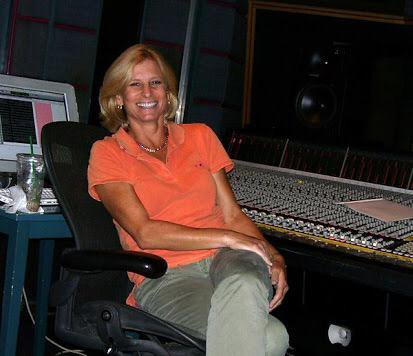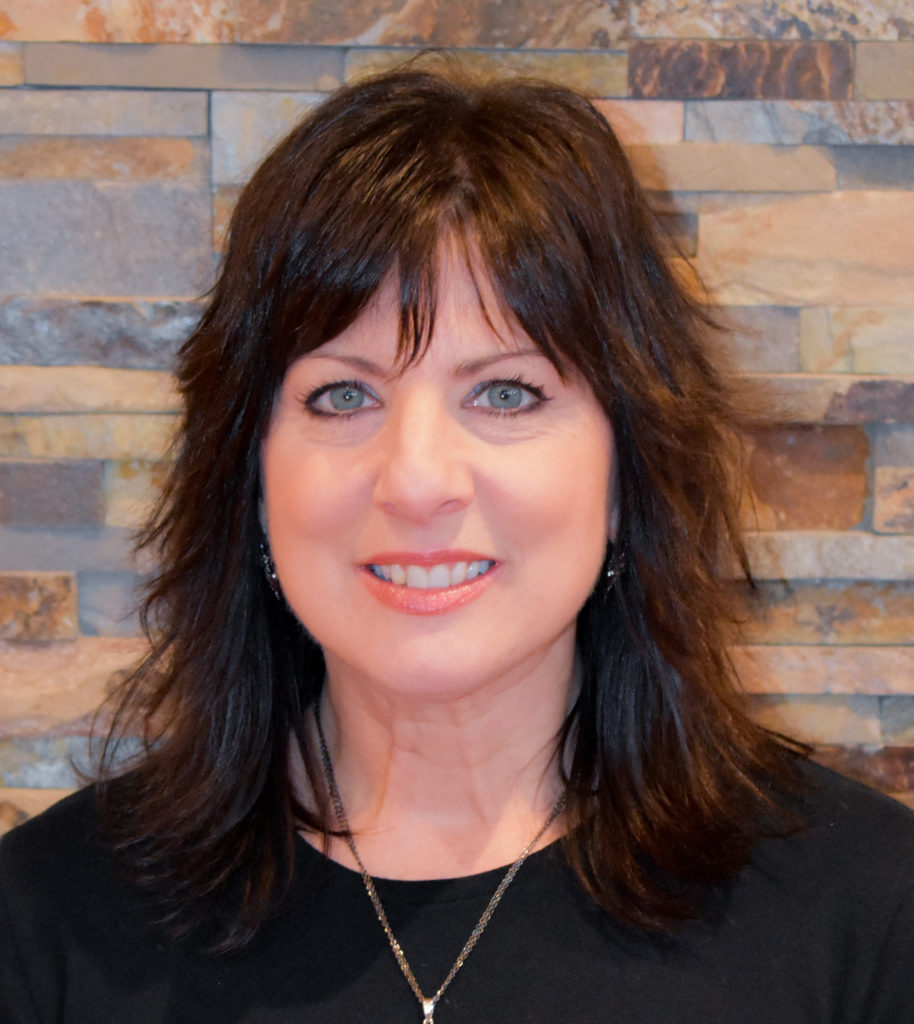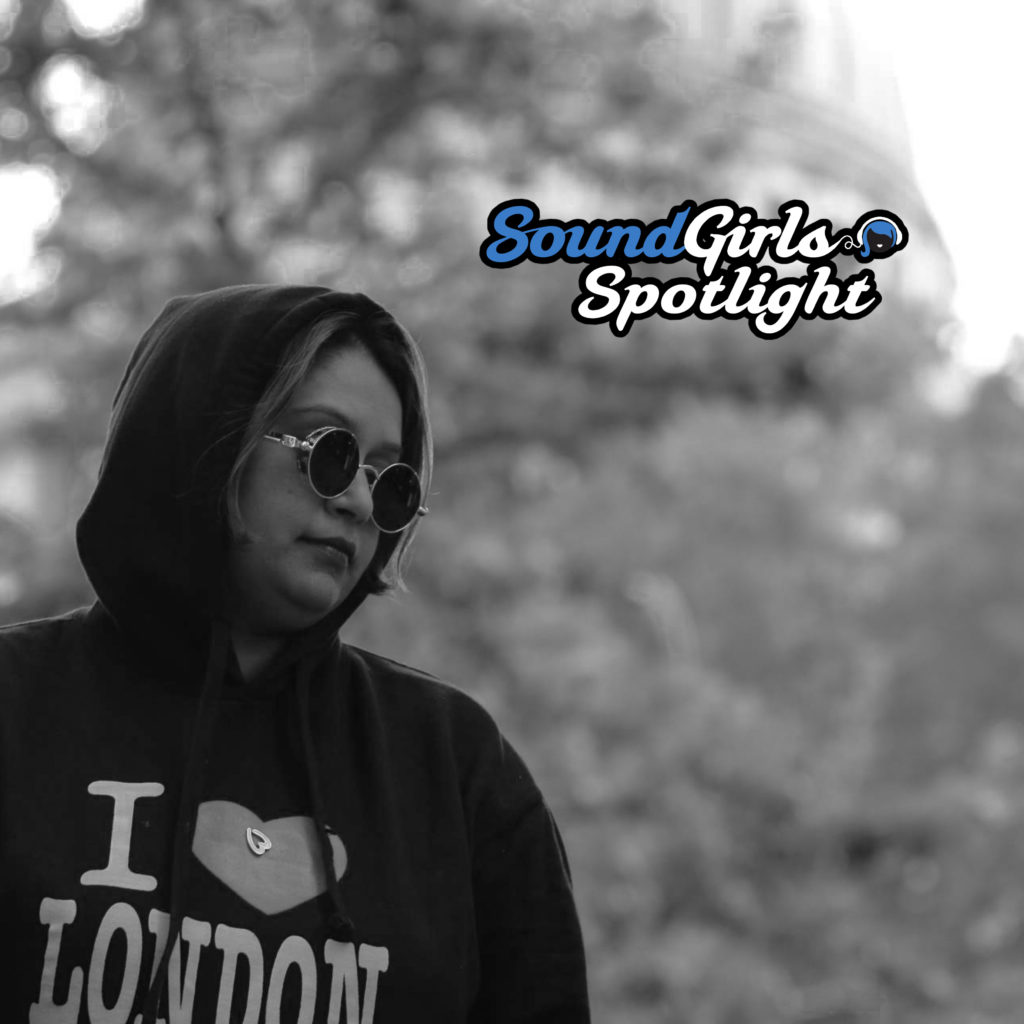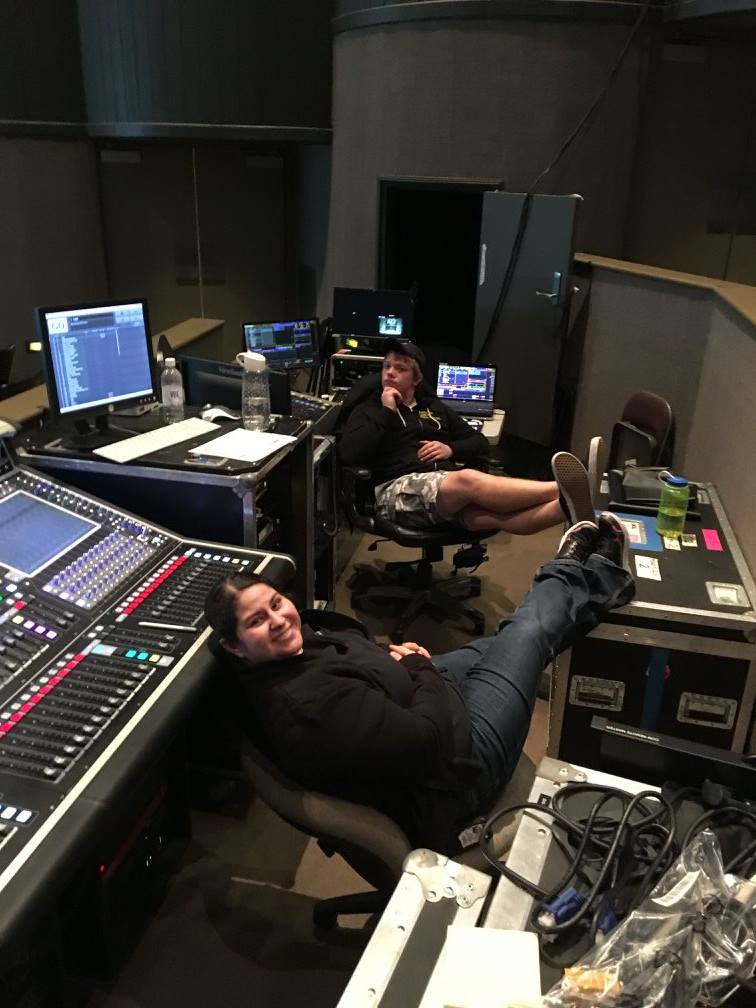Cynthia Daniels is a two-time Grammy award-winning (‘02 & ‘11) recording engineer most known for her extensive work in Broadway musicals (The Producers, Flower Drum Song, etc.) and TV/Film (World News Tonight, 20/20, MTV). Besides engineering, she has garnered a ‘07 Emmy Award for her work as a composer and music supervisor for the daytime series “Guiding Light.” Cynthia has worked with many renowned artists such as Julie Andrews, Alec Baldwin, Paul McCartney, Chaka Khan, Sarah Jessica Parker, just to name a few. Her Easthampton recording space MonkMusic Studios, designed by John Storyk, has been nominated for a TEC Award and is home to renowned productions such as Beyonce’s “God Made You Beautiful” and Randy Brecker’s “Randypop.” Aside from her thriving career in music engineering and production, she devotes her time to supporting emerging artists through the fledging independent label MonkMusic Records.
Cynthia is an embodiment of someone living the dream despite the odds stacked against her. Succeeding in a male-dominated industry and making a living in music, doing what she loves. Not surprisingly, her journey was wrought by numerous challenges–many of which are still experienced by today’s aspiring engineers. Yet, her relentless determination, passion, and propensity for taking risks kept her going despite these setbacks.
“Every gig is making you ready for the next gig.”
Cynthia knew early on in high school that she wanted to become a recording engineer. Back then, however, there were no accredited sound engineering college programs. Instead, Cynthia attended Boston University in the mid-1970s and majored in Film and Television/Public Communications because of how closely intertwined sound production is to the field. During the summer, she traveled to New York to get her audio engineering certificates from the Institute of Audio Research.
Not content with just another formal education under her belt, Cynthia took the first of many risks in her career. While a junior in college, she applied to do live sound in a well-known jazz and rock club, Paul’s Mall in Boston, and this she did without extensive prior knowledge of live sound reinforcement. Cynthia flew by the seat of her pants. But combining this with a proactive mindset, she put in the hours before the gig to make sure she was prepared. “Preparation is everything,” says Cynthia. “Your reputation is everything. But if you make a mistake, it’s alright. It’s not gonna hit the New York Times.”
As expected by anyone starting in the business, things didn’t always go as planned. From rookie mistakes to dealing with someone pouring beer on the PA head during one of her many punk rock club gigs, Cynthia had her share of challenges that were beyond her control. She encountered her first gender discrimination at a club in 1976 when her job was sabotaged by a sound guy when she didn’t reciprocate his advances towards her. But Cynthia assures aspiring engineers that despite feeling that your career could be over any second, you are going have another crack it. “Your life is not over. No matter how deeply you care about your job, mistakes happen. Don’t make them again. Learn what you can learn. You’re never gonna be ready for everything until you have a bunch of time under your belt.”
For Cynthia, life is certainly not a straight line. It’s important for women in the audio engineering industry to know that all these setbacks they may encounter is part of life’s ebb and flow. “It’s more like a spiral. You will end up close to where you started but a little further along each cycle. It’s like a slinky, and you want the spiral to keep spiraling up.”
From Boston to A&R Recording with Phil Ramone
Like many aspiring engineers, she began the job-hunting process by calling recording studios. Despite all her efforts, Cynthia couldn’t secure a job in the studio, so she worked instead in a local hi-fi store to stay immersed in the audio/music scene. Through this job, she met a lot of musicians whom she would eventually be spending her time with recording on a 4-track recorder during their nightly rehearsals. “You can’t keep a good engineer girl down!”, proudly chimes Cynthia.
She kept this going while helping out on live sound gigs at the local music scene. It was during this time when she got acquainted with a team of engineers operating the recording truck at a punk concert. They offered her a job, and soon enough, she started touring under contract with ABC Radio. For six months, Cynthia traveled around the country recording major country-western acts for an ABC’s radio series. It didn’t take long, however, for the road to take its toll on her. After a brief break, she moved to NY to work on TV commercials with friends from college. Slowly but surely, she worked her way towards landing a job in A&R Recording.
Years of engineering experience didn’t change the fact that Cynthia had to start from the bottom when she worked in A&R Recording. And back in the 80s, studios were predominantly an “all-boys club.” It made the road from assisting to engineering sessions much longer and challenging. Despite these setbacks, Cynthia fondly remembered her times spent under the wing of Phil Ramone. There was no “good enough” in the pursuit of excellence. “If your job was to make film copies, make it the best copy you can make. If you’re gonna, make a demo, better make it sound like a record.”
Chief Engineer & Manager at Eras Studio
After three years in A&R Recording, Cynthia made the move to Eras studio–a smaller-scale recording facility that brought her closer to the world of film & television. Though starting out as an assistant, it didn’t take her long to move up and book her own sessions. It was all thanks to hard work and perfect timing. She came in at a period when the senior engineers were starting to get tired of their jobs. Cynthia took this opportunity to step up as needed. Soon enough, she was averaging 16 work hours per day. The more she did it, the more she wanted to do it. It was a natural transition for her then to become Eras Studio’s new chief engineer and studio manager.
Cynthia’s decision to work in a smaller recording studio was serendipitous. It didn’t take long when large-scale recording facilities started closing down because of the evolving needs of the music industry. Through her stint at Eras Studios, she continued to immerse herself in music productions ranging from jazz to orchestra and more live sound reinforcement gigs and recordings at larger venues and concert halls like Avery Fisher and Carnegie Hall.
Not realizing at the time that she was working with highly prominent jazz artists, she opened new doors for herself. Thanks to a jazz producer and record company whose own musical theater career took off, Cynthia was eventually brought in to engineer for a Broadway production. This sparked a successful 25-years-and-counting engineering relationship with Broadway and jazz recording.
One would think that Cynthia’s audio engineering career from then on would be smooth-sailing to today. But somewhere along this winding path, she hit a dark period during the early 90s when work started to slow down significantly. To cope, Cynthia took on any job she could find. Yet she never forgot the pursuit of learning. Around this time, she seized the opportunity to learn all the new DAWs she could get her hands on. Even learning the Synclavier wasn’t an exception. Work eventually started to pick up again, and this newly acquired knowledge would aid Cynthia in adapting to the critically evolving music technology at the time. “If you’re not gonna be a self-starter, you’re not gonna get anywhere.”
The birth of MonkMusic Studios
Building a state-of-the-art recording studio was the last thing on Cynthia’s mind when she decided to buy a house in the East Hamptons in 1998. It was an inspired decision based out of necessity.
After years of working on numerous music productions, film scores, and TV shows in New York, a home at the Hamptons was simply for her own benefit–a sanctuary to go to on the weekends, a way to escape the hustle and bustle of New York City. Soon enough, she began receiving calls to record ADR at the Hamptons. It wasn’t long until celebrities living and vacationing in the same area were reaching out to Cynthia for help with recording sessions.
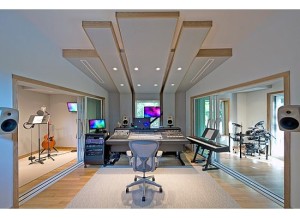
It was the last thing she expected, but Cynthia had to turn one of her rooms at the Hamptons into a makeshift recording studio. It served its purpose. However, the demand for a recording engineer kept growing. It wasn’t uncommon for Cynthia to leave New York City at 4 am in order to make it to the Hamptons for a 9 am ADR session. With a growing high-profile clientele at the Hamptons (Richard Gere, Paul McCartney, just to name a few), Cynthia realized that she couldn’t keep inviting clients to a home studio. It dawned on her that she did not work for 20 years in New York only to do A-level work in a C-quality space at the Hamptons. A studio had to be built from the ground up. It was time to take another risk.
Choosing to build a state-of-the-art recording studio adjacent to her home was not a simple decision for Cynthia. Despite the growing demand for her engineering services in town, the risk of significantly losing money from running an aesthetically and technically superior studio in a small town was huge. But keeping the same mindset she’s had from the start of her career, Cynthia chose to build MonkMusic Studios out of passion, not as a business strategy.
Hiring John Storyk, however, was an inspired decision on her end. She knew she had to hire him simply because he’s built half of the rooms she’s worked in. Initially, Cynthia was unsure about the overall vision of the new studio until John Storyk came in. The sideways studio layout, putting in as many windows as possible without significant reflection was an inspired and challenging design choice. That, in addition to the studio wall fabrics and dimensions, contribute to the unique vibe of the space.
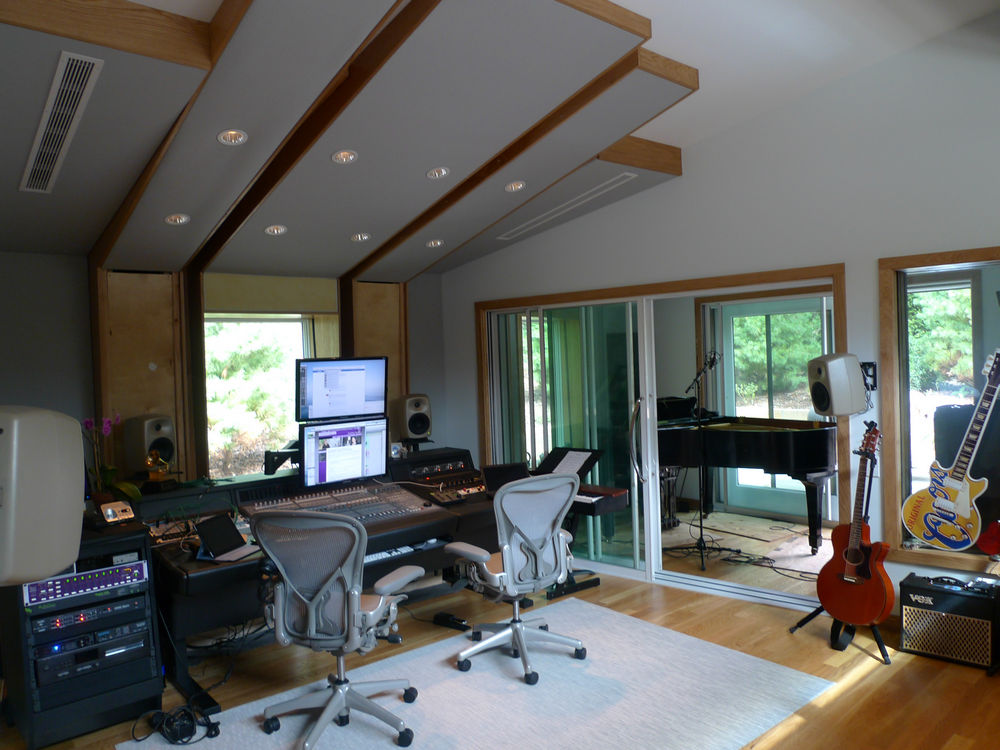
For Cynthia, it’s a big source of pride to own MonkMusic Studios and be able to foster creativity in it. The risk paid off completely. She built it, and they came.
Beyond the studio walls
Living in the Hamptons exposed Cynthia not only to the growing celebrity population in the area. More importantly, she stumbled upon a thriving community of local musicians. Though famous as a celebrity getaway, the Hamptons is home to real, talented but struggling musicians who deserve a voice. MonkMusic Radio was Cynthia’s answer to that call. Aired on the local NPR station, Monk Music Radio featured live monthly concerts and weekly interviews that highlight the thriving and talented musicians of the Hamptons.
A labor of love, Cynthia devoted ten hours every week to put on the weekly radio show. Though she recently had to put the show on hold due to time constraints and funding, Cynthia maintains a thriving collaborative relationship with the local music scene. A bevy of these local artists team up with Cynthia on a regular basis for songwriting and production sessions at the MonkMusic Studios. She has worked so often with these studio musicians that they’ve been labeled as “The Wrecking Crew East” by many.
Cynthia’s latest venture is the independent label MonkMusic Records. Another labor of love, her indie label showcases a diverse group of talented local artists: two rock bands InCircles and Dune Local, and renowned experimental/improvisational violinist Martha Mooke. Running a record label was a natural transition for Cynthia who believes that one side of having a successful career is the ability to help people and give back to the community that has provided so richly for her in inspiration. She took it upon herself to help artists actualize their vision and support them.
 Putting up an indie label is such a huge undertaking that she herself wouldn’t recommend it to anyone. Even with three people on staff, running a label entails a large psychological, financial, emotional and time investment. But to Cynthia, the rewards of nurturing talent and creativity in musicians have more weight than the challenges that go with it.
Putting up an indie label is such a huge undertaking that she herself wouldn’t recommend it to anyone. Even with three people on staff, running a label entails a large psychological, financial, emotional and time investment. But to Cynthia, the rewards of nurturing talent and creativity in musicians have more weight than the challenges that go with it.
Success story
There is no doubt in Cynthia’s mind that she’s achieved living her dream. A hard-earned success story. It’s not all too common for someone in this industry to still be doing this after decades in the business, and for this, she remains grateful. “I feel like the luckiest person in the world.”
Despite the present cynicism about careers in the audio industry, Cynthia strongly believes that if success can happen to her, it can happen to many aspiring women engineers as well. There may be the dilemma of luck and timing being involved. But “if you don’t play, you can’t win.” Ultimately, “your heart has to be in the right place.”
